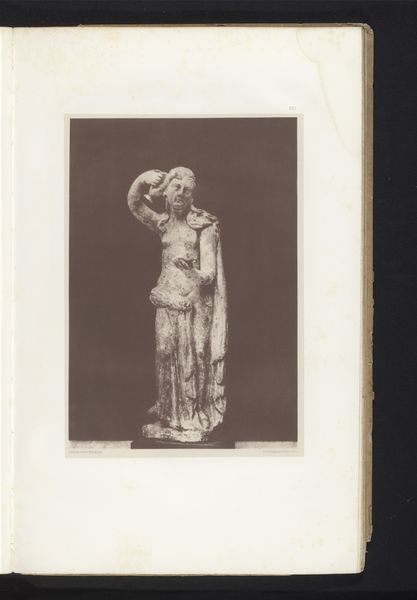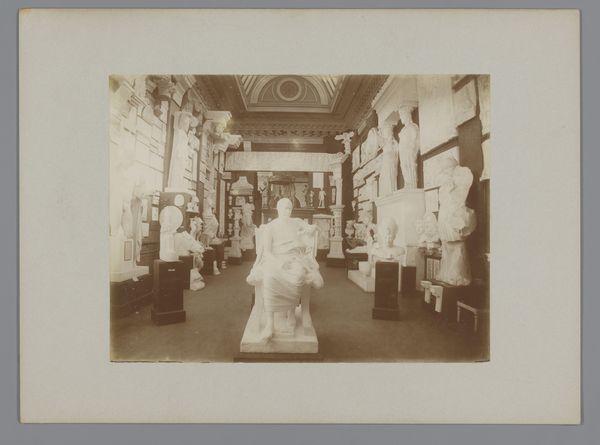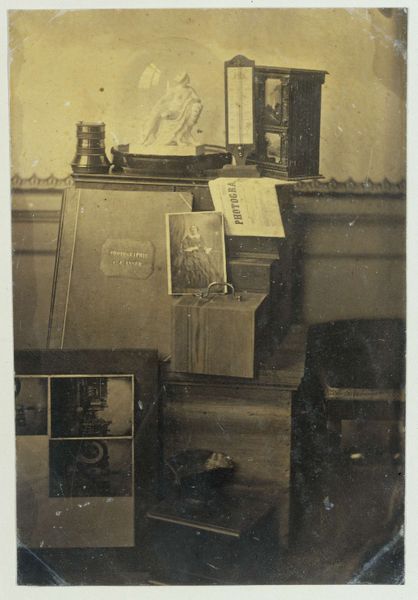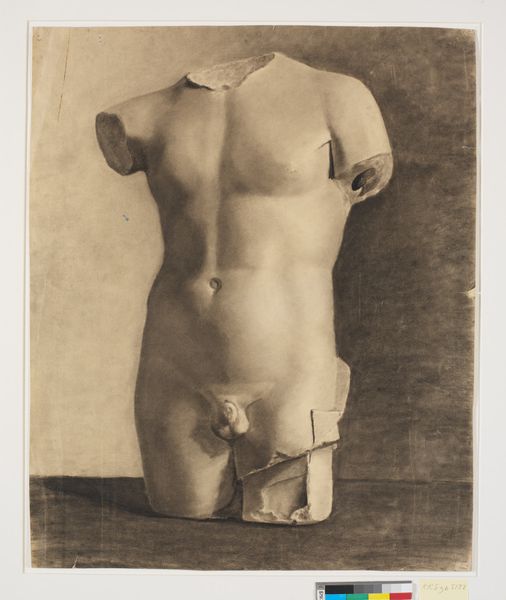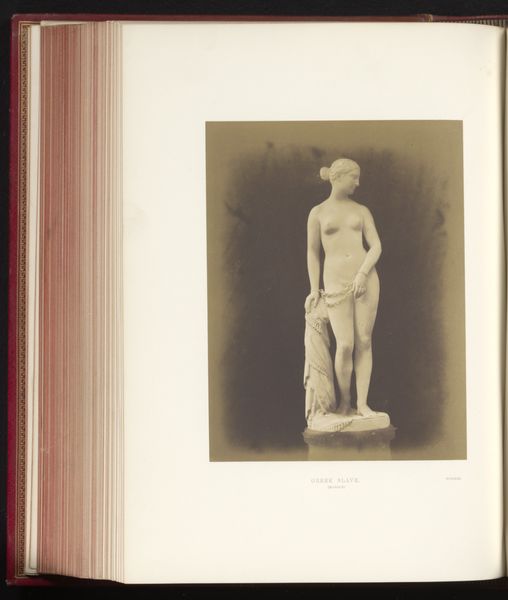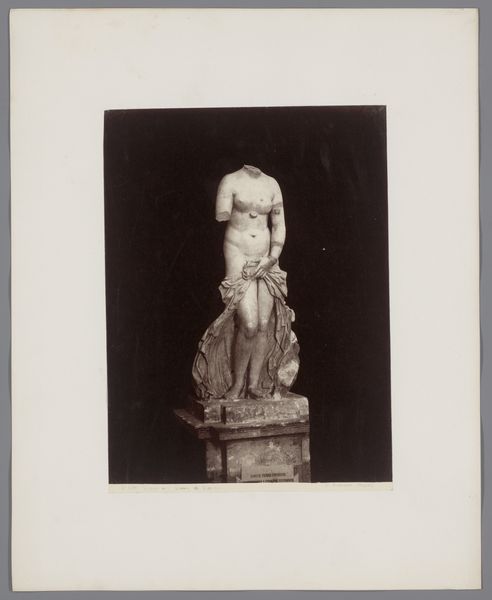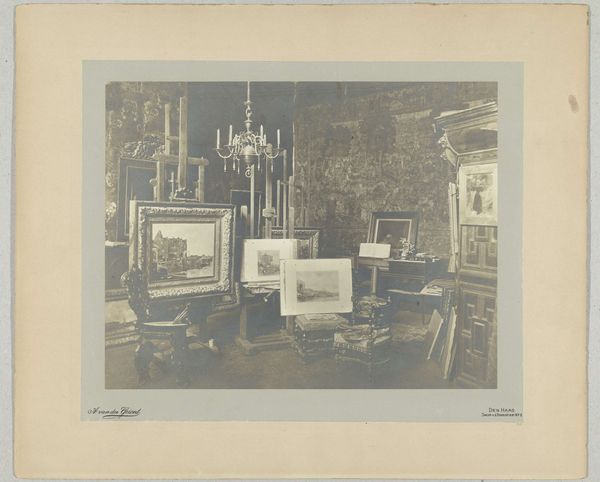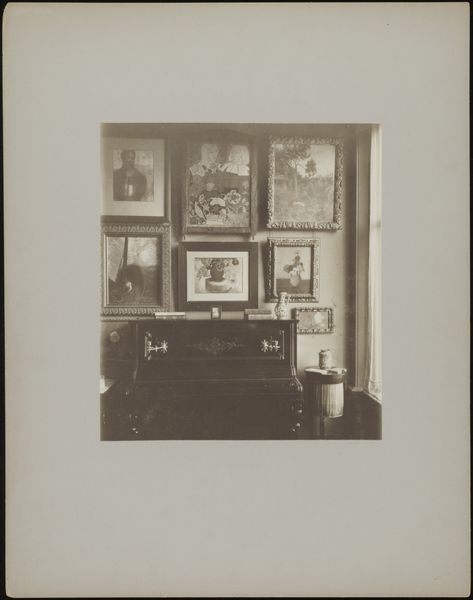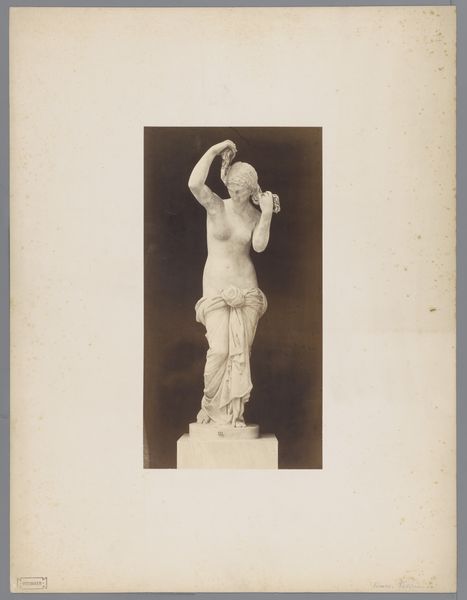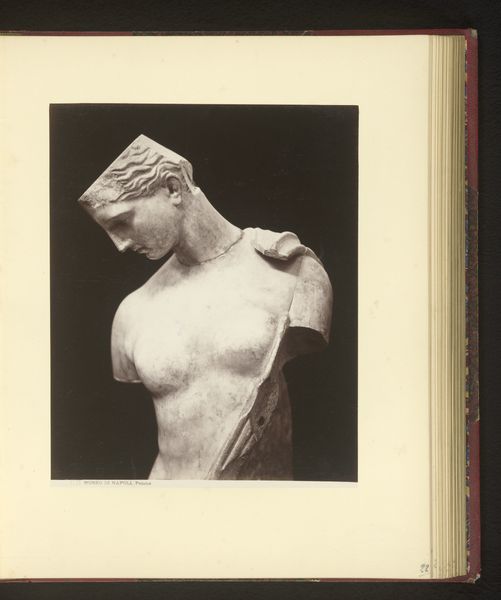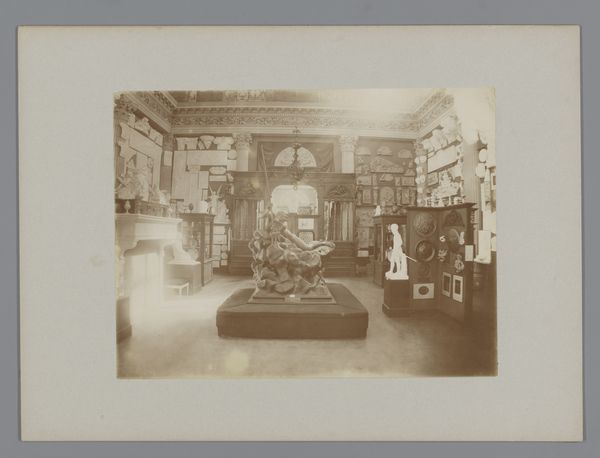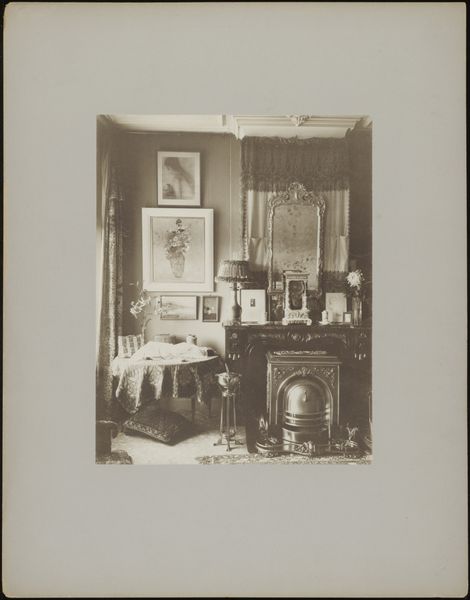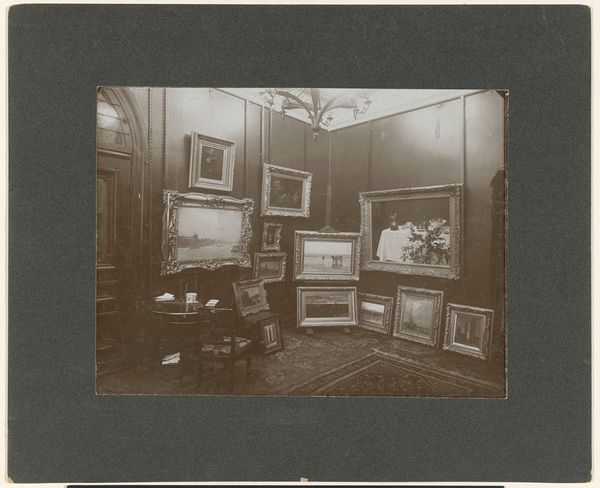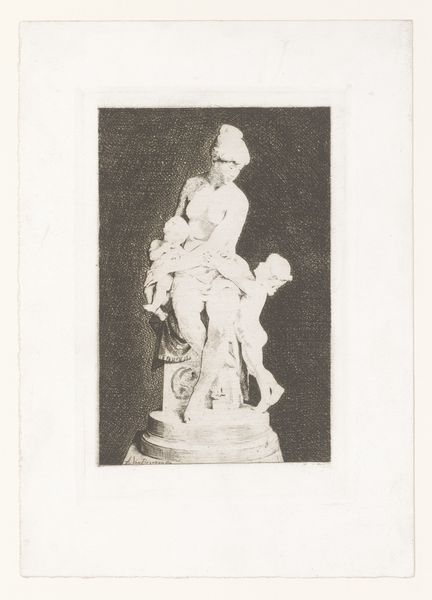
Stilleven van een schoorsteenmantel met een beeld, vazen, boeken en een spiegel 1896
0:00
0:00
drawing, pencil
#
drawing
#
pencil
#
symbolism
#
academic-art
#
realism
Dimensions: height 377 mm, width 520 mm
Copyright: Rijks Museum: Open Domain
René Janssens made this etching of a mantelpiece still life sometime between 1870 and 1936. Instead of traditional painting or drawing, the artist used the repeatable medium of printmaking, revealing a fascination with the textures and tones of a domestic interior. The effect relies entirely on the process, in which the artist would have painstakingly created the composition on a metal plate. This was likely achieved by covering the plate with a waxy ground, scratching away lines to expose the metal, and then submerging the plate in acid. The acid bites into the exposed metal, creating grooves that hold ink. The plate is then cleaned, inked, and pressed onto paper, transferring the image. The technique is labor-intensive and requires a high degree of skill, yet the resulting prints could be sold at a relatively affordable price, making art accessible to a wider audience. This etching invites us to consider the social and economic context in which art is made and consumed, blurring the lines between art, craft, and industry.
Comments
No comments
Be the first to comment and join the conversation on the ultimate creative platform.
